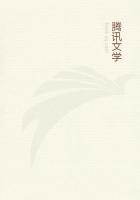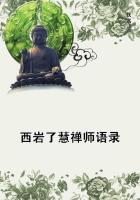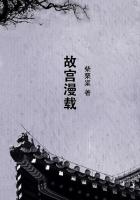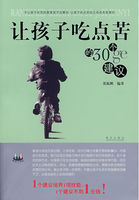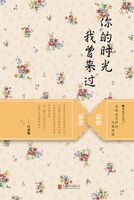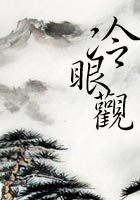LUNAR LANDSCAPES
At half-past two in the morning, the projectile was over the thirteenth lunar parallel and at the effective distance of five hundred miles, reduced by the glasses to five. It still seemed impossible, however, that it could ever touch any part of the disc.
Its motive speed, comparatively so moderate, was inexplicable to President Barbicane. At that distance from the moon it must have been considerable, to enable it to bear up against her attraction.
Here was a phenomenon the cause of which escaped them again.
Besides, time failed them to investigate the cause. All lunar relief was defiling under the eyes of the travelers, and they would not lose a single detail.
Under the glasses the disc appeared at the distance of five miles. What would an aeronaut, borne to this distance from the earth, distinguish on its surface? We cannot say, since the greatest ascension has not been more than 25,000 feet.
This, however, is an exact description of what Barbicane and his companions saw at this height. Large patches of different colors appeared on the disc. Selenographers are not agreed upon the nature of these colors. There are several, and rather vividly marked. Julius Schmidt pretends that, if the terrestrial oceans were dried up, a Selenite observer could not distinguish on the globe a greater diversity of shades between the oceans and the continental plains than those on the moon present to a terrestrial observer. According to him, the color common to the vast plains known by the name of "seas" is a dark gray mixed with green and brown. Some of the large craters present the same appearance. Barbicane knew this opinion of the German selenographer, an opinion shared by Boeer and Moedler.
Observation has proved that right was on their side, and not on that of some astronomers who admit the existence of only gray on the moon's surface. In some parts green was very distinct, such as springs, according to Julius Schmidt, from the seas of "Serenity and Humors." Barbicane also noticed large craters, without any interior cones, which shed a bluish tint similar to the reflection of a sheet of steel freshly polished. These colors belonged really to the lunar disc, and did not result, as some astronomers say, either from the imperfection in the objective of the glasses or from the interposition of the terrestrial atmosphere.
Not a doubt existed in Barbicane's mind with regard to it, as he observed it through space, and so could not commit any optical error.
He considered the establishment of this fact as an acquisition to science. Now, were these shades of green, belonging to tropical vegetation, kept up by a low dense atmosphere? He could not yet say.
Farther on, he noticed a reddish tint, quite defined. The same shade had before been observed at the bottom of an isolated enclosure, known by the name of Lichtenburg's circle, which is situated near the Hercynian mountains, on the borders of the moon; but they could not tell the nature of it.
They were not more fortunate with regard to another peculiarity of the disc, for they could not decide upon the cause of it.
Michel Ardan was watching near the president, when he noticed long white lines, vividly lighted up by the direct rays of the sun.
It was a succession of luminous furrows, very different from the radiation of Copernicus not long before; they ran parallel with each other.
Michel, with his usual readiness, hastened to exclaim:
"Look there! cultivated fields!"
"Cultivated fields!" replied Nicholl, shrugging his shoulders.
"Plowed, at all events," retorted Michel Ardan; "but what laborers those Selenites must be, and what giant oxen they must harness to their plow to cut such furrows!""They are not furrows," said Barbicane; "they are _rifts_.""Rifts? stuff!" replied Michel mildly; "but what do you mean by `rifts' in the scientific world?"Barbicane immediately enlightened his companion as to what he knew about lunar rifts. He knew that they were a kind of furrow found on every part of the disc which was not mountainous; that these furrows, generally isolated, measured from 400 to 500leagues in length; that their breadth varied from 1,000 to 1,500yards, and that their borders were strictly parallel; but he knew nothing more either of their formation or their nature.
Barbicane, through his glasses, observed these rifts with great attention. He noticed that their borders were formed of steep declivities; they were long parallel ramparts, and with some small amount of imagination he might have admitted the existence of long lines of fortifications, raised by Selenite engineers.
Of these different rifts some were perfectly straight, as if cut by a line; others were slightly curved, though still keeping their borders parallel; some crossed each other, some cut through craters; here they wound through ordinary cavities, such as Posidonius or Petavius; there they wound through the seas, such as the "Sea of Serenity."These natural accidents naturally excited the imaginations of these terrestrial astronomers. The first observations had not discovered these rifts. Neither Hevelius, Cassin, La Hire, nor Herschel seemed to have known them. It was Schroeter who in 1789 first drew attention to them. Others followed who studied them, as Pastorff, Gruithuysen, Boeer, and Moedler. At this time their number amounts to seventy; but, if they have been counted, their nature has not yet been determined; they are certainly _not_ fortifications, any more than they are the ancient beds of dried-up rivers; for, on one side, the waters, so slight on the moon's surface, could never have worn such drains for themselves; and, on the other, they often cross craters of great elevation.
We must, however, allow that Michel Ardan had "an idea," and that, without knowing it, he coincided in that respect with Julius Schmidt.

